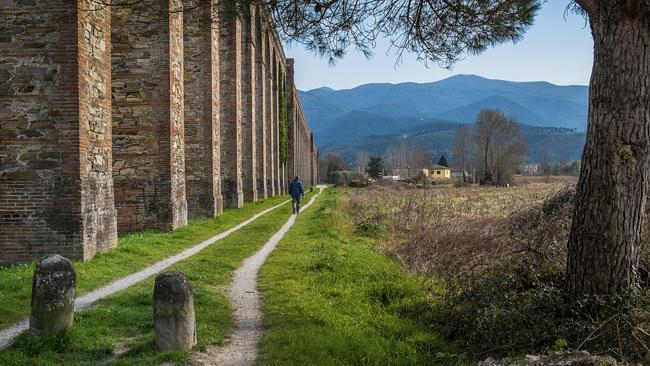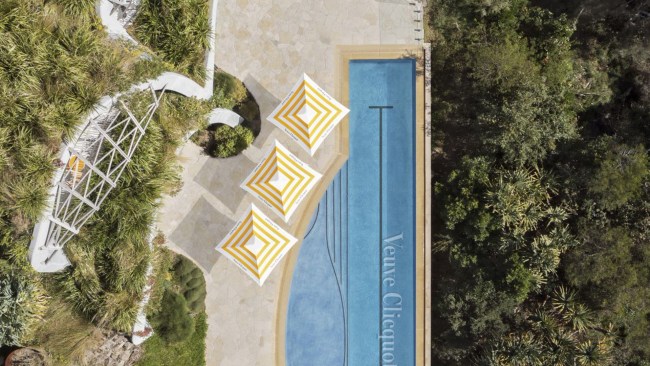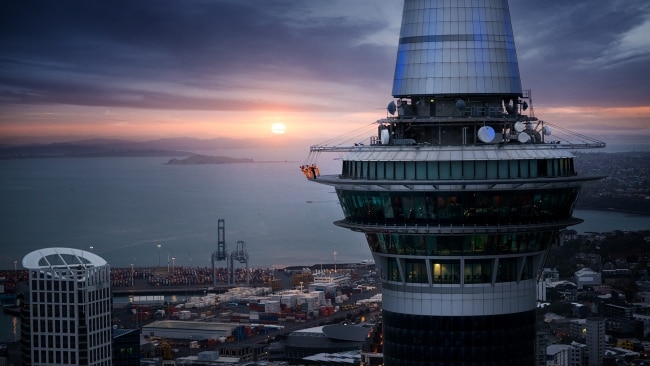Via Francigena pilgrims’ trail: the way to go in Tuscany
Rolling hills, poppy-filled fields and terracotta-coloured farmhouses are mesmerising on Tuscany’s Via Francigena.

Despite continuous rain, I pull on hiking boots and click open a walking stick. I slip and slide along the rain-soaked 120km stage of the Via Francigena from Lucca to Siena. It should take me just under a week.
Short in distance but long on charm, I hadn’t expected this to be simply one of the most beautiful walks in Tuscany. Rolling hills, poppy fields and terracotta-coloured farmhouses are all mesmerising.
The trail I walk changes from soft uphills to ferocious downhills, following pebble paths, little-used laneways and the occasional busy roadway. I push on, despite emerging blisters and feet nagging me to stop. The way weaves through grassy fields and beside muddy ditches. Like a slithering snake, it wends through villages, past churches, monasteries and olive groves. My fingers wrinkle like prunes from the non-stop rain.
The Via Francigena, that is “the road that comes from France”, starts from Canterbury Cathedral in southern England, crosses Kent, meanders along the Somme and its World War I battlefields in northern France, over the Swiss Alps and down into Italy’s Aosta valley.
From there it passes through the regions of Tuscany and Lazio before finishing at St Peter’s Basilica in Rome, the end game for pilgrims. It’s one of the three big Christian pilgrimages, together with the renowned Spanish Camino de Santiago and the lesser known pilgrimage from Rome to Jerusalem.
Eating a sandwich under a tree, or sitting on a worn, centuries-old church step, are my preferred lunch spots. In the evenings at local trattorie, I feast on traditional Tuscan fare, such as earthy insalata di funghi seasoned with lemon and salt, thick panzanella tomato-and-bread salad or tagliatelle smothered in rich and meaty cinghiale ragu. Happily, Tuscan reds complement everything.
I opt for the relative luxury of staying in B & Bs, but there are hostels, guesthouses and an ever-increasing number of convents and monasteries reopening their doors to meet demand. I sleep like a rock, too tired to dream. In recent times an army of volunteers and sponsors has erected signposts and painted arrows along the original route. It’s hard to get lost, but not impossible.
I keep the faith, even when the trail seems to peter out, and my patience is rewarded when a red arrow peeks through the undergrowth.
“In the late afternoon, seeing our hilltop village destination come into view is magical,” says David, a young, fit computer programmer from Britain I meet along the way. He stretches out like a contented cat next to his overstuffed knapsack at our rest spot of old stumps and makeshift picnic table.
Each day the usual suspects appear — other pilgrims, farmers offering us fruit from their trees, cyclists wishing us a good journey. There is no shortage of animals on the trail either — horses, dogs, cats, chickens, deer, the odd snake, sheep — and at almost every turn are fields of beans, corn, wheat and potatoes.
Wildflowers try to out-bloom each other with their purples, yellows, reds and whites.
I pass through the walled city of Lucca, see the unforgettable skyline of San Gimignano and take in the preserved medieval masterpiece of Siena. This is some walk.
Almost a week has gone by. I reflect on how peaceful I feel as I pack up my mud-caked hiking boots. Being a pilgrim on the Via Francigena may not change my life, but it is a special way to see what often whizzes by a car window. Walking has its own appeal. Add that to the allure of Italy and it’s the perfect way to spend a few days.



To join the conversation, please log in. Don't have an account? Register
Join the conversation, you are commenting as Logout